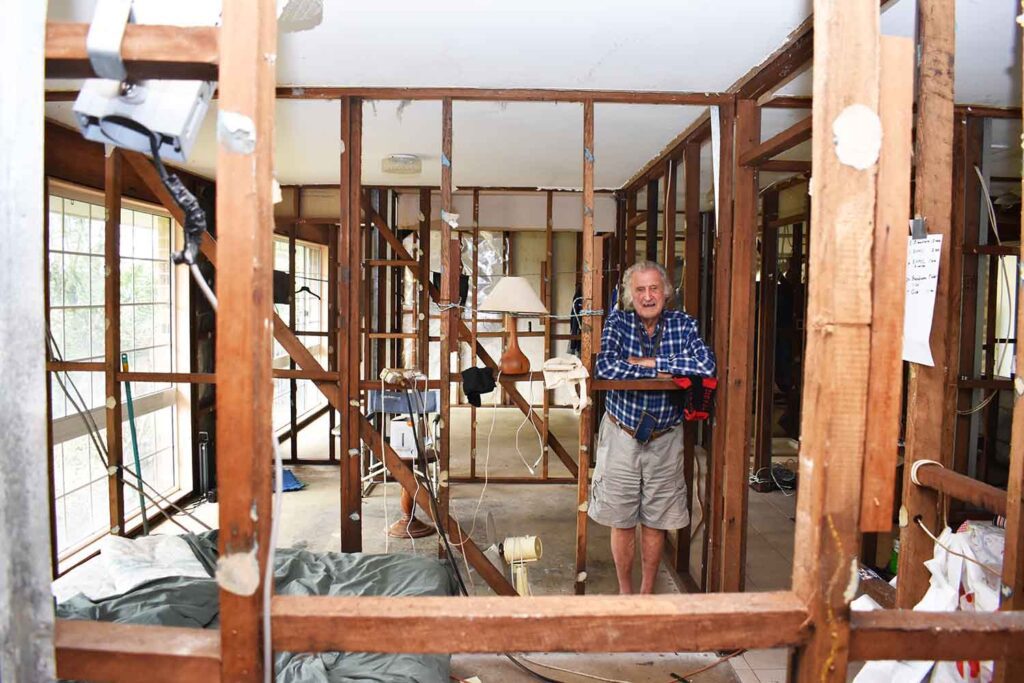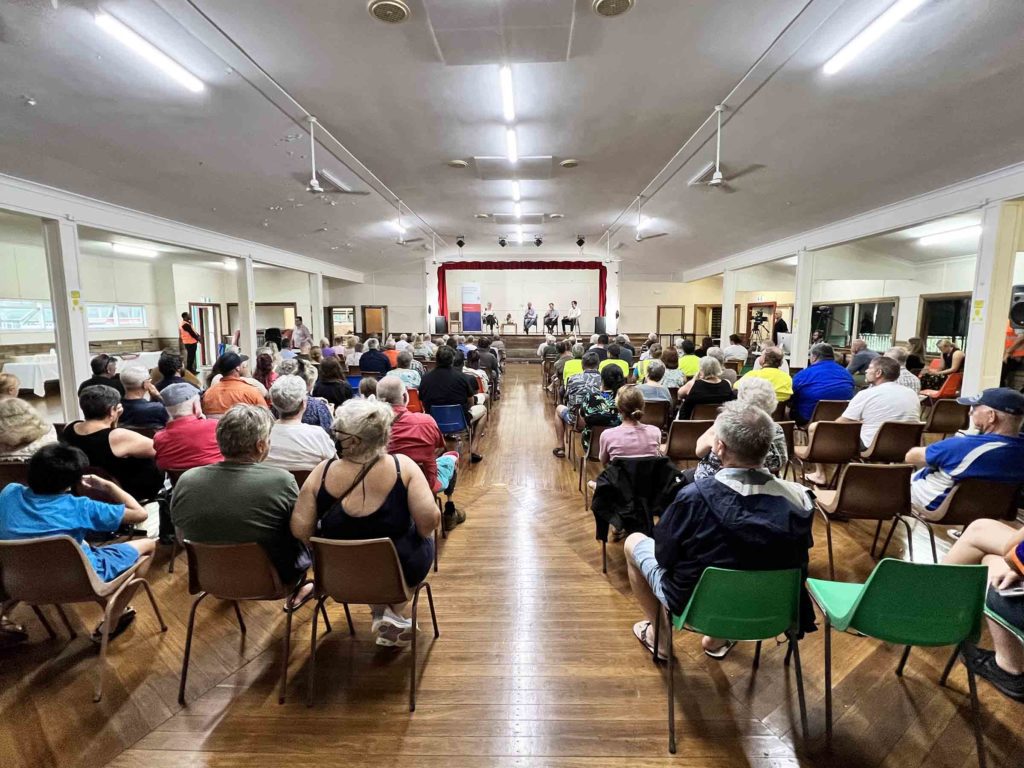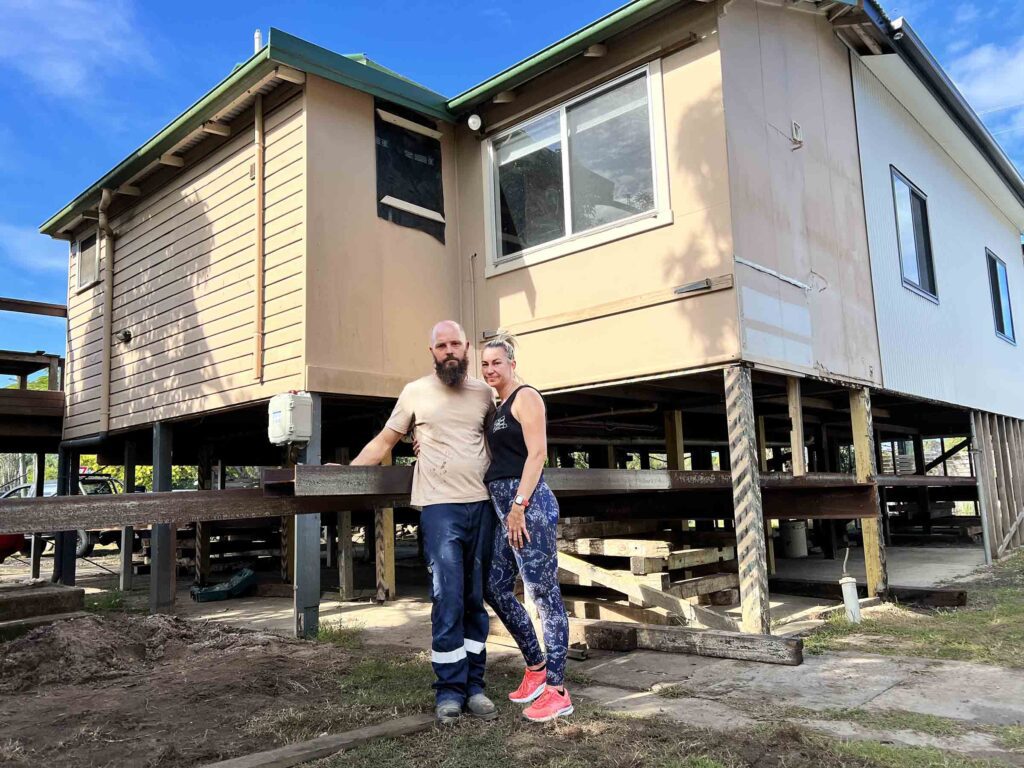ABOVE: Luke O’Driscoll and Cass Petty stand next to their Broadwater home which is about to be raised another 1.5 metres.
Susanna Freymark
The numbers for voluntary buybacks are in – and it is not looking good.
The Northern Rivers Reconstruction Corporation has the enormous task of assessing flooded properties for the $700million Resilient Homes Program.
It’s complex. There are many factors to consider in which houses to buy back – we can all see that.
But the pace of these assessments is painfully slow.
So many residents speak of being on hold, of waiting, waiting, waiting to move forward with making their homes liveable again.
Supposedly, more than 2000 buybacks will be offered across the Northern Rivers. Yet the buyback numbers released recently are damning.
As of May 5, one Richmond Valley homeowner has been offered a buyback. Yep – the grand total of one. A further 25 are considered of “indicative eligibility” (this is a NRRC category).
In Kyogle LGA, zero buybacks have been made.
Lismore has had 217 buybacks approved.
Of course, Lismore will have higher numbers because of the population. But the future flood threat in riverside towns of Coraki, Broadwater and Woodburn is real and buybacks are imperative for some residents.
Bob May is one of those people waiting to hear whether he is eligible for a buyback. The interior frames of his Woodburn home are covered in foil. Just foil.
He makes a cup of tea on a camp stove.
Should he repair his flooded home where he was rescued by local tinnie heroes during the catastrophic floods of 2022 or will he get the option to relocate?
“My home can’t be raised; it is brick veneer. I’d have to go two storeys up, it’s a no-no for a person my age,” he said.
Bob will be 86 in September.
He has submitted all the paperwork for a voluntary buyback and still he is waiting.
“This is a desperate situation for hundreds of people and we’re all in the dark, 90% of the people in Woodburn are in the dark,” Bob said.
The lack of communication from the NRRC has been “pathetic” he said.
“Global warming has changed the world weather situation completely and dramatically.
“I don’t want to go through a flood again.”
So, Bob waits in his home with foil walls, hoping he will be contacted by the corporation. Hoping they will offer a buyback so he can move out of the flood zone. Forever.

Luke O’Driscoll is tired of waiting. He has not had a single communication from the corporation so he is using his own money to raise his Broadwater home in the hope the corporation will refund the money.
“The blanket statement, We are prioritizing the buybacks first has grown old,” Mr O’Driscoll said.
“All of the signed and accepted offers of buyback have yet to receive the money and be able to move on with their life.
“As for those in the house lifting or retrofitting category, why are they being delayed?”
Mr O’Driscoll simply can’t wait for the corporation’s decision. When the house was bought, it was 2 metres off the ground. He is raising it a further 1.5 metres.
His wife Cass Petty was 35 weeks pregnant when floodwaters came into their home. With their child aged three, they evacuated to a relative’s house nearby.
“My local town and surrounding communities are filled with shells of houses,” he said.
“Every dollar I had in savings, received in non-government grants, or donated from friends and family is being put towards raising my house.”
The raising of the home they moved into in 2017 is expensive.
He estimates it will cost $85,000 with a further $45,000 to replace and extend the staircase. It will take six weeks of work to lift the house.
“Within six weeks, I will be broke with a raised, flood-resilient home, which will still be unliveable, lacking toilets, a kitchen, walls in some rooms and unsafe for my two children. I have gambled that the government will fulfil its promise and provide the funding to lift, including reimbursement, if action is taken earlier,” Mr O’Driscoll said.
But he can’t get an answer on this. He needs some certainty that he can repair the kitchen that has been pulled down because it was so flood damaged. He simply wants his home back that can withstand future floods and keep his family safe.
The NRRC said in a statement that it is prioritising homes in the highest flood risk areas and case managers are speaking with the most severely impacted homeowners first.
The voluntary buyback scheme will be offered to approximately 2000 Northern Rivers residents in the most vulnerable areas where major flooding would pose a catastrophic risk to life or where homes have been destroyed.
The corporation must work smarter and faster. People traumatised by the flood disaster should not have to cope with bureaucratic incompetency. It is unfair.
The Resilient Homes Program was announced in October last year and is one of the largest resilience responses of its kind in Australian history.
Its success is dependent on action. Unless something changes soon, failure looms. This failure will be crushing for communities such as Woodburn and Broadwater where residents already feel forgotten.
Please let this not be the case.
At IndyNR.com, we want to be reporting on people moving back into their homes and getting on with their lives.
The legacy of the flood 14 months ago, binds the community to an unknown future unless the phrase Build Back Better has real action attached to it that makes a difference to those whose homes and lives were dramatically altered by the biggest flood we have ever seen.



